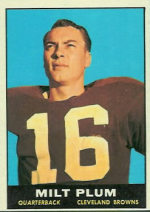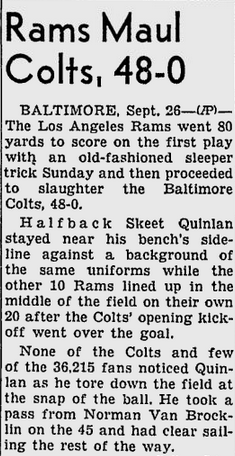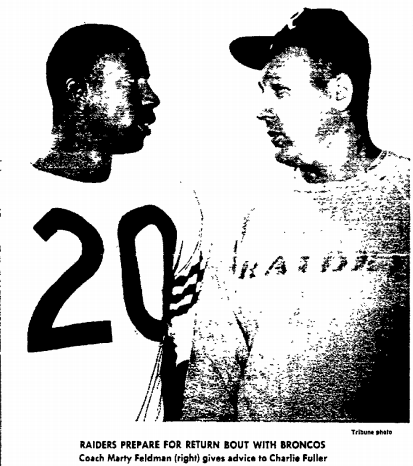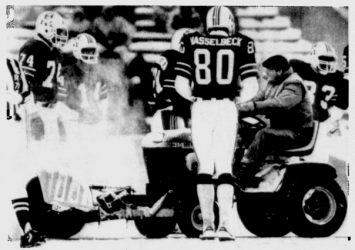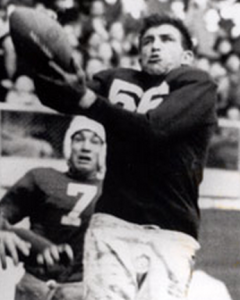Once again Sunday, NFL fans watched slack-jawed as another Mystery Running Back darted and dashed all over the field. This time it was Branden Oliver, the Chargers’ undrafted rookie, who amazed the masses, racking up 114 yards rushing, 68 receiving and one touchdown — in just his third game as a pro — as San Diego routed the Jets 31-0.
This is becoming almost an annual event now, pro football’s version of Punxsutawney Phil emerging from his hole to forecast the weather. Oliver’s emergence, of course, just reminds everybody that scouting is a woefully inexact science, especially when it comes to running backs.
We know this because good ones go unclaimed in the draft all the time. Indeed, there have been 17 1,000-yard rushing seasons in the 2000s by backs who weren’t selected. Practically every year, it seems, an overlooked runner makes personnel departments cringe by leading the NFL in rushing, yards from scrimmage, touchdowns or otherwise distinguishing himself. Check out this list:
THE 9 UNDRAFTED BACKS IN THE 2000S WHO HAVE BEEN 1,000-YARD RUSHERS
[table width=”500px”]
Running back\, Team,Best Year,Att,Yds,Avg,TD
Arian Foster\, Texans,2010,327,1\,616,4.9,16
Priest Holmes\, Chiefs,2002,313,1\,615,5.2,21
Willie Parker\, Steelers,2006,337,1\,494,4.3,13
Ryan Grant\, Packers,2009,282,1\,253,4.4,11
James Allen\, Bears,2000,290,1\,120,3.9,2
Dominic Rhodes\, Colts,2001,233,1\,104,4.7,9
BenJarvus Green-Ellis\, Bengals,2012,278,1\,094,3.9,6
Fred Jackson\, Bills,2009,237,1\,062,4.5,2
LeGarrette Blount\, Bucs,2010,201,1\,007,5.0,6
[/table]
Note: League leaders in bold face. Foster (2,220) and Holmes (2,287) also led the league in yards from scrimmage.
It’s not just these guys, either. It’s all the other guys, the ones who were drafted as afterthoughts in the late rounds. There are plenty of those, too. Such as:
TOP LATE-ROUND RUNNING BACKS IN THE 2000S
[table width=”500px”]
Running back\ Team,Round,Best Year,Att,Yds,Avg,TD
Michael Turner\, Falcons,5th,2008,376,1\,699,4.5,17
Alfred Morris\, Redskins,6th,2012,335,1\,613,4.8,13
Mike Anderson\, Broncos,6th,2000,297,1\,487,5.0,15
Ahmad Bradshaw\, Giants,7th,2010,276,1\,235,4.5,8
Chester Taylor\, Vikings,6th,2006,303,1\,216,4.0,6
[/table]
Oliver, built along the lines of the Eagles’ Darren Sproles at 5-foot-7, 201 pounds, came out of the same University of Buffalo program that produced James Starks. Starks, you may recall, was one of the nicer stories of 2010. After being drafted in the sixth round by the Packers and spending most of the season on the Physically Unable to Perform list, he pulled a Punxsutawney Phil in the playoffs and rushed for 315 yards to help Green Bay win the Super Bowl. It’s the third-highest rushing total by a rookie in the postseason since 1960.
There’s no telling what lies ahead for Oliver. Sunday could be the highlight of his career or it could lead to even better things. With Donald Brown now questionable with a concussion, Ryan Matthews (knee) still out and Danny Woodhead (broken fibula) on injured reserve, there’s plenty of opportunity for the rookie.
But if it is his one, brief, shining moment, it was an awfully good one. His 182 yards from scrimmage are the third most by a running back this season (and include a 50-yard reception).
But getting back to our previous subject — why are so many good backs drafted so low (or not at all)? — it’s interesting to compare the Top 5 rushers this season with the Top 5 passers in terms of what round they went in.
CURRENT TOP 5 RUSHERS
[table width=”350px”]
Yds,Running Back\, Team,Round (Pick)
670,DeMarco Murray\, Cowboys,3rd (71)
460,Le’Veon Bell\, Steelers,2nd (48)
404,Arian Foster\, Texans,UFA
396,Rashad Jennings\, Giants,7th (250)
365,Frank Gore\, 49ers,3rd (65)
[/table]
CURRENT TOP 5 IN PASSER RATING
[table width=”350px”]
Rating, Quarterback\, Team,Round (Pick)
116.3,Philip Rivers\, Chargers,1st (4)
114.8,Aaron Rodgers\, Packers,1st (24)
112.9,Russell Wilson\, Seahawks,3rd (75)
109.0,Peyton Manning\, Broncos,1st (1)
100.3,Andy Dalton\, Bengals,2nd (35)
[/table]
Huge contrast, no? On the quarterback side, you’ve got three No. 1s (two of them very high), a near No. 1 and a No. 3. And on the running back side, you’ve got a second-rounder, two third-rounders, a seventh-rounder and an undrafted free agent.
You hear all the time that the hardest position evaluate is quarterback. Well, on the basis of this, running backs may be even harder to get a read on.
Source: pro-football-reference.com

